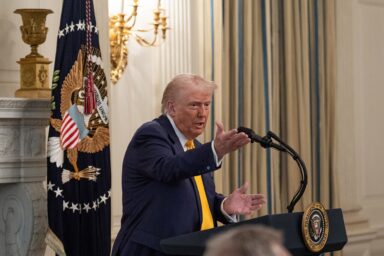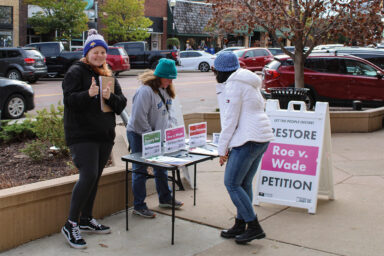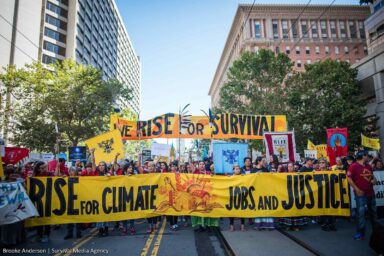From shootings in the streets to wars, researchers say the explanation is in the climate.
|
Listen To This Story
|
This year, crime rates increased 36 percent in Chicago. Chicago Mayor Lori Lightfoot has tried to offer an explanation by holding those who contribute to gun violence accountable; the city filed a lawsuit against an Indiana gun store that has been tied to hundreds of firearms recovered from crime scenes.
But researcher Andreas Miles-Novelo, a faculty member of the School of Psychology at Fielding Graduate University, doesn’t see the rise as the result of a few aberrations. The explanation, he thinks, is everywhere.
“Violence is not random as many people believe,” Miles-Novelo said in an interview with WhoWhatWhy. “It’s often a reactionary response to the material and environmental conditions people face.”
As it gets hotter, crime rates rise.
Many US cities have long seen seasonal patterns in burglaries, theft, and gun violence, with higher rates during the summer months. In Chicago, temperatures 10 degrees Celsius higher than average were associated with a 33.8 percent higher rate of shootings from 2012 to 2016.
“There is empirical evidence that higher temperatures lead to greater interpersonal and intergroup violence,” James Hansen, adjunct professor in the department of earth and environmental sciences at Columbia University, said in an interview with WhoWhatWhy. “It makes common sense — people are more easily moved to anger in uncomfortably hot conditions.”
Some who study this think violence needs to be a bigger part of the climate conversation.
Craig Anderson, a professor of psychology at Iowa State University, believes that violence needs to be added to climate change agendas domestically and globally. Green initiatives and policies like the Inflation Reduction Act, he argues, will not only reduce violence on a city by city level, but more widely, too.
“Fighting climate change will reduce the likelihood of future intergroup violence, including terrorism and wars,” he said in an interview with WhoWhatWhy.
International human rights groups take the connection between climate change and violence seriously. Climate change as a driver of violence against children — in regard to child marriage and labor — was the focus of an event hosted by UNICEF in April. And a panel discussion during the 50th session of the United Nations Human Rights Council in June explored the relationship between climate change and violence against women and girls.

So, there is consensus among experts that the climate crisis will exacerbate violence. However, some experts think that the link between climate change and violent crime is secondary to other factors, such as income inequality and policing, and that raises a question: Which climate effects should be emphasized if the goal is for people to take action?
“The violence part is important,” said Ryan Harp, a postdoctoral scholar at Northwestern University, “but it’s just one relatively small part of the broader impacts of climate on human health.”
He thinks people will respond more effectively to conversations that focus on tangible climate impacts, such as health.
“Just in the last month, a climate change-exacerbated extreme heat wave in Europe killed thousands of people,” he said. “And that’s not to mention other climate and health impacts like impacts on food and water availability or shifts in insect-carried diseases like malaria, West Nile virus, and Lyme disease. Recentering climate change discussion on concrete examples like these is vital.”
But Anderson, who has been writing with his colleagues on the connection between climate change and violent behavior for over a decade, thinks that the violence component should take precedence. He even goes as far as saying that fighting climate change equates to fighting crime.
“I’m not the only one who has expressed concern about this,” he said. “Twenty years or so ago, a major think tank comprised of retired generals, admirals, and other high-ranking military officers issued a report on the future challenges of global warming on the US military. It included concerns about likely increases in the frequency of regional military conflicts, which easily expand into larger wars.”
The correlation between climate change and violence is consistent across income levels, geographic location, and personal circumstance, so “everyone is already at greater risk of violence because of rapid global warming,” Anderson said. Extreme weather events, he argues, can create instability within society, which, in turn, can lead to violence.
But there is one thing that all experts can agree on: The crisis surrounding climate change must be rectified. If it is not, more of the conditions that allow for violence will be experienced by greater numbers of people, Miles-Novelo said.
“Combating climate change means systemically and holistically changing how we view our interactions with our planet and with everyone we share it with,” he said.
This story was written by a member of our Mentor Apprentice Program (MAP). It gives aspiring journalists an opportunity to hone their craft while covering national and international news under the tutelage of seasoned reporters and editors. You can learn more about the MAP and how you can support our efforts to safeguard the future of journalism here.




